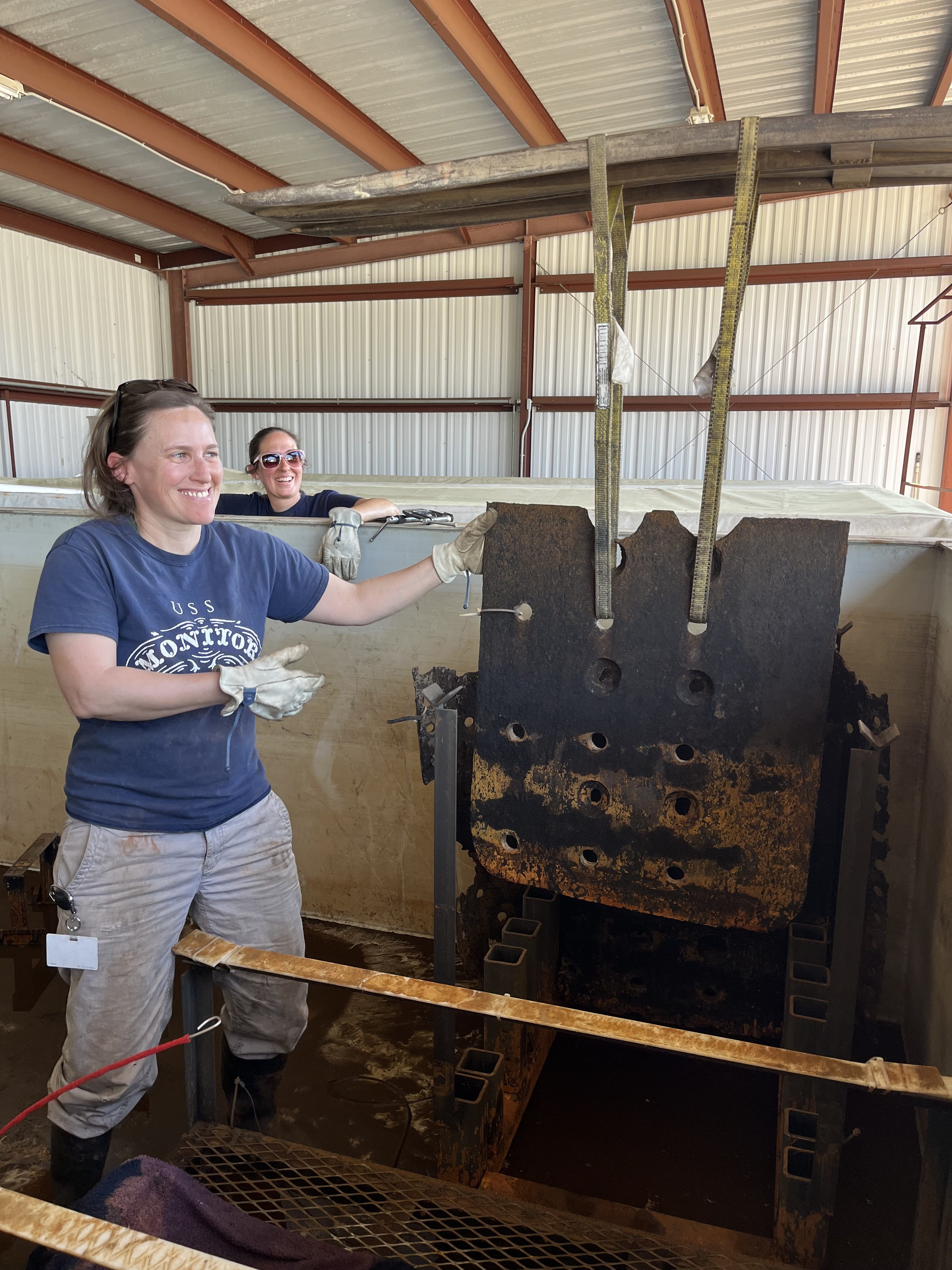You might be wondering what Monitor Conservation has been up to lately. A few months ago, we decided to give the objects desalinating in the Tank Farm a little TLC. Three of the tanks had pulled out a huge amount of salts from the objects. And we noticed a few bugs in the tanks’ electrolytic reduction (ER) system. So, we decided to give those three tanks a refresh!
This involves removing the old solution, cleaning the electrolytic reduction system so that it functions properly, cleaning the objects to remove corrosion, and setting everything back into place with a new solution. It took us about five weeks to finish all three tanks.
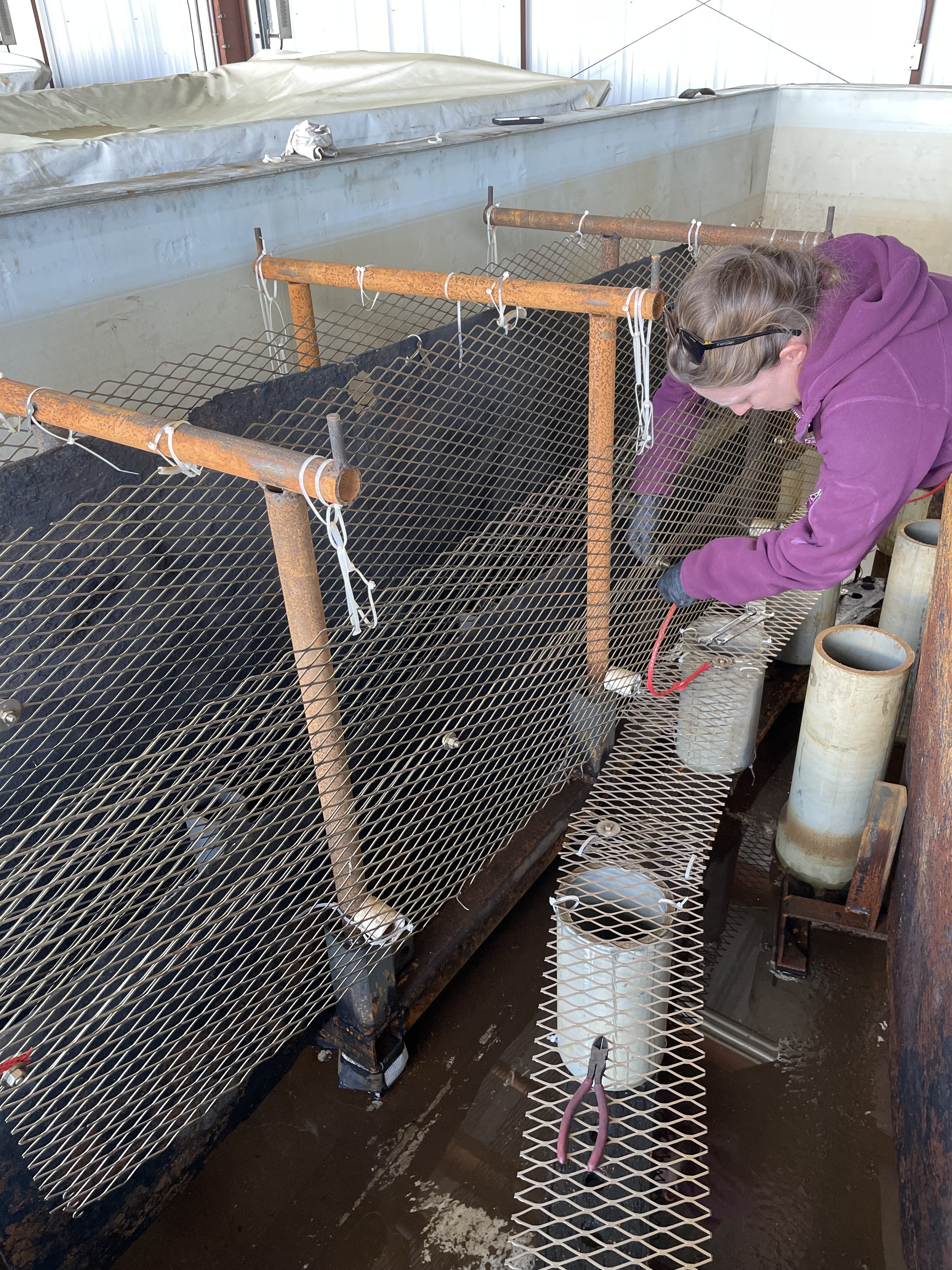
With every tank, we go through a similar process. The electrolytic reduction system is turned off and the solution of water and corrosion inhibitor is drained. After rinsing the tank to remove any chemical residue, we removed the ER system components to be cleaned. As the electrolytic reduction system removes salts from the objects, pieces of the system itself can corrode, making the system less efficient. So we clean or replace any parts of the system that have degraded.
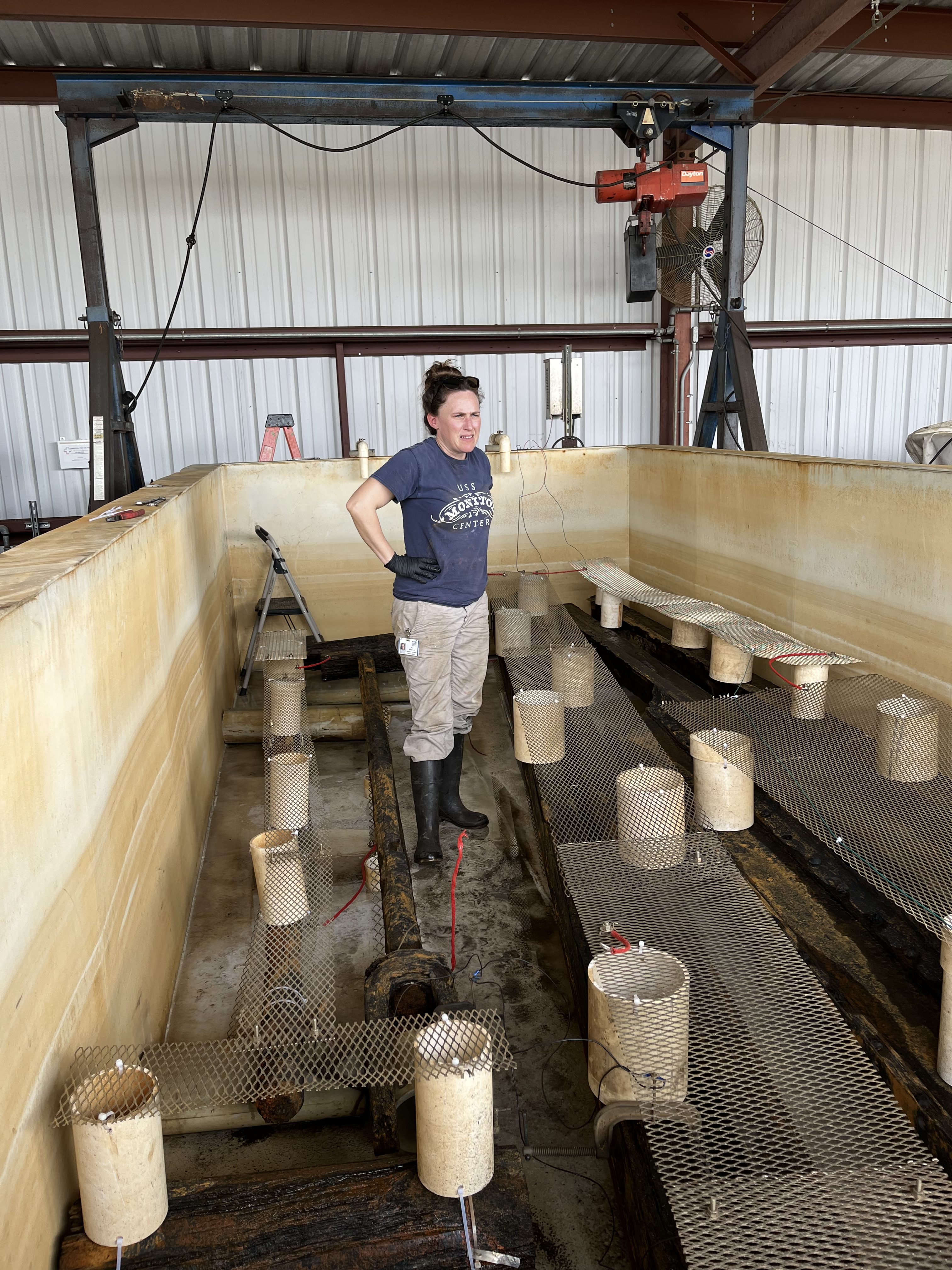
Next, we remove the objects themselves. Smaller objects can be carefully removed by hand, but most require the use of machinery to safely move. That’s where a gantry crane or forklift comes in. Staff are trained on the use of forklifts, cranes, and rigging so that we can carefully move large objects in ways that are safe for both people and objects. Objects are set on saw horses or blocks while they are cleaned.

All of the wrought iron objects are cleaned using dry ice blasting. This cleaning technique quickly and safely removed concretion and corrosion from the surface of the objects. The process also involves careful photo documentation to see the effect of dry ice blasting on the object surface and to document any rivets or other pieces that are loosened from the beams during treatment.
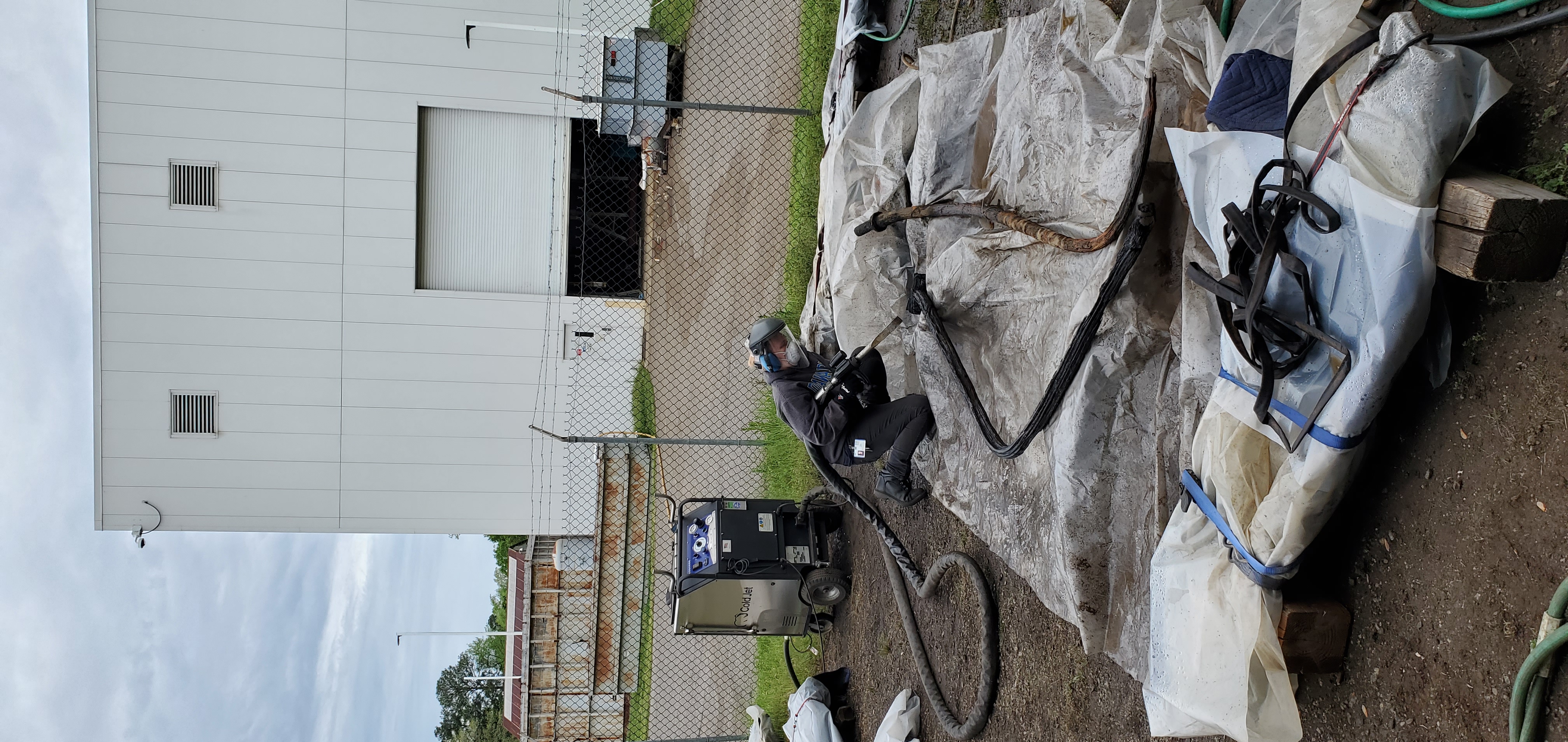
A sprinkler system keeps objects in the tanks wet during the cleaning process. If objects have to stay outside the tank for more than a few hours during cleaning, we keep the object wet with a system of soaker hoses, packing blankets, and tarps.
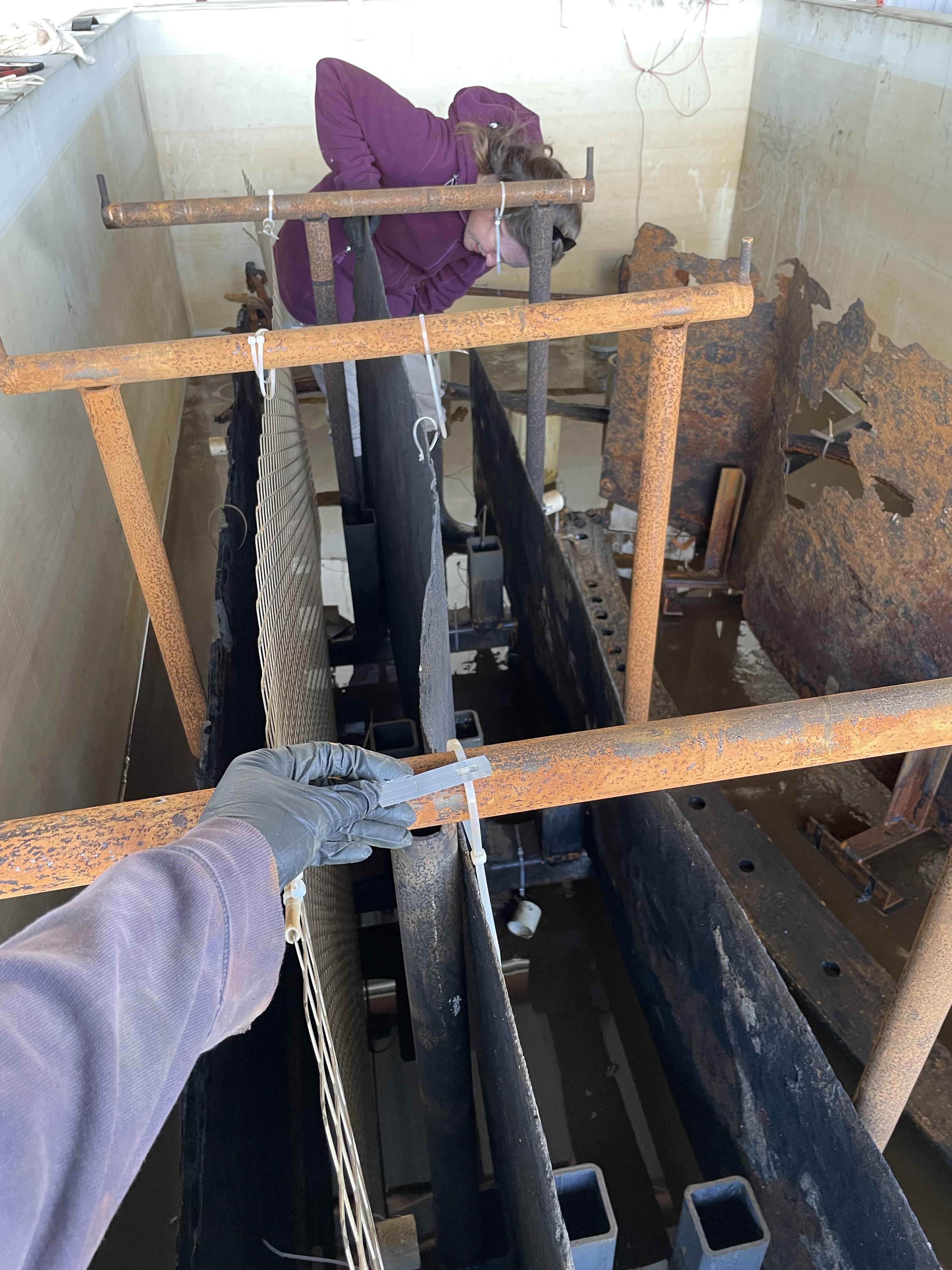
As the electrolytic reduction system has been working well on these objects for several years, removing salts and corrosion, you can see a lot of that corrosion deposited on the floor of the tanks! So we also give the tanks a good clean to make sure we keep our cleaning system efficient.
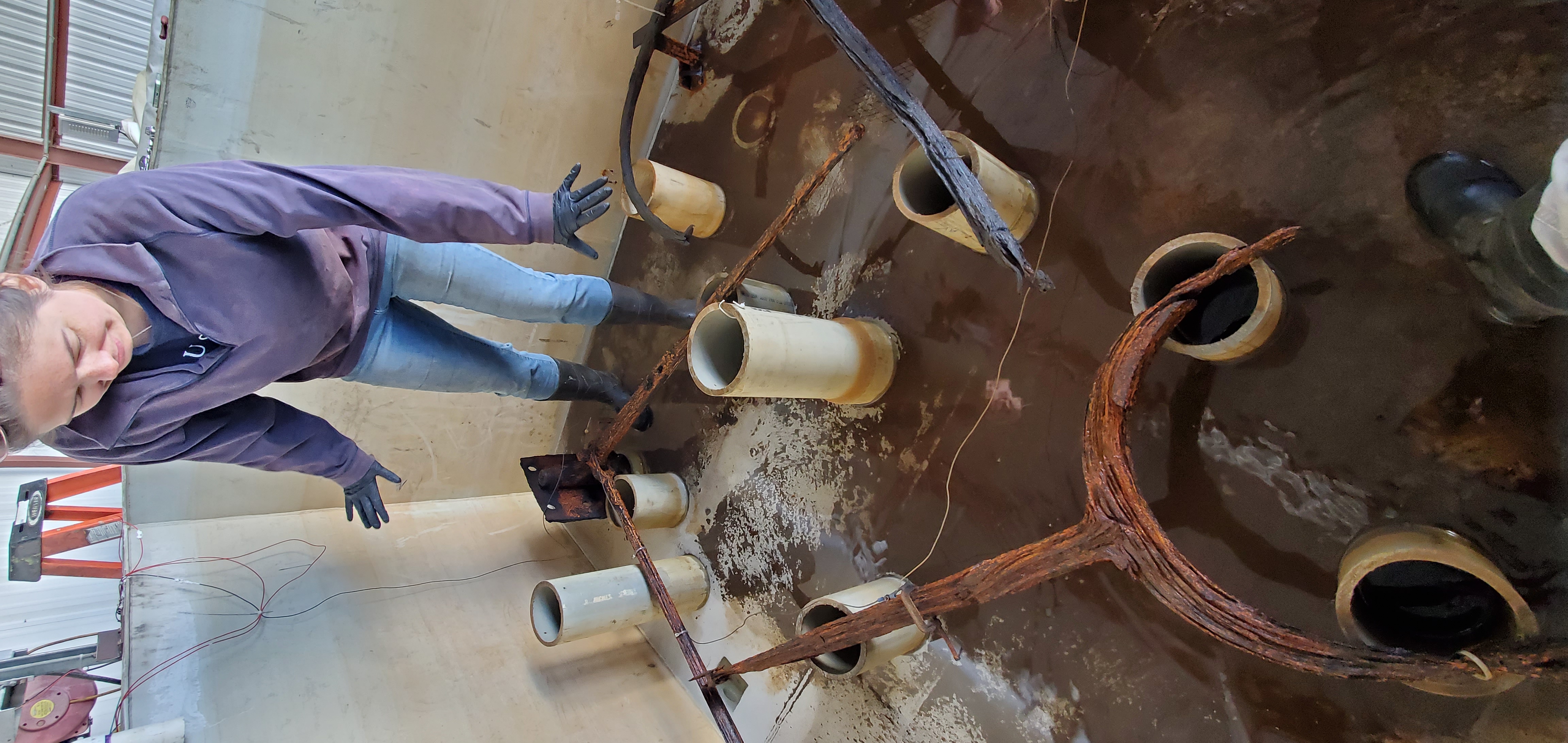
Once that’s done, all of the objects can be returned to their tanks, the sacrificial anodes put back in place and the electrolytic reduction system reset. The system is checked and double checked to make sure it is working properly. Then we refill with our extremely pure reverse osmosis water and corrosion inhibitor. Once the tank is full we can turn the ER system back on, and everything is good to go. We perform weekly checks on the ER system for every tank, so we can be sure that everything continues to work properly. All three tanks have been doing well, so we’re counting it another successful few weeks in the tank farm.
